Historical Tour Rockport
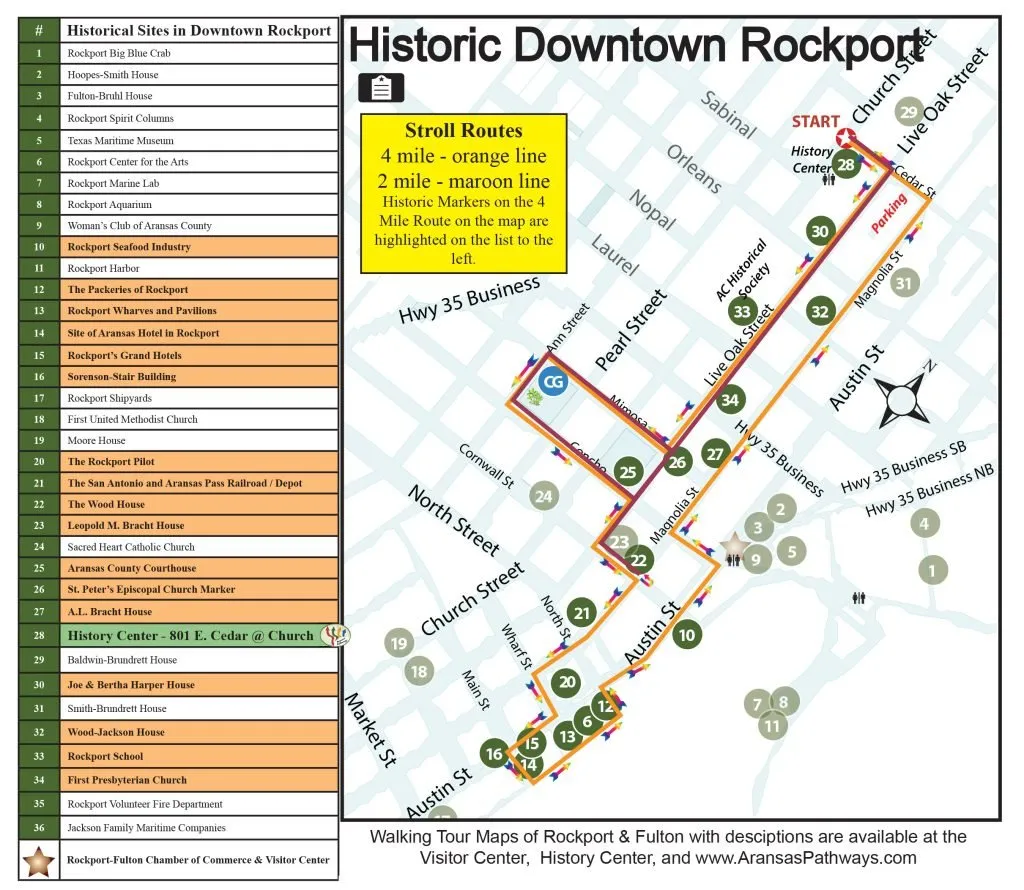
The History Center has mapped out a walking tour of Historic Downtown Rockport. Click here for Printable map.
Connie Hagar
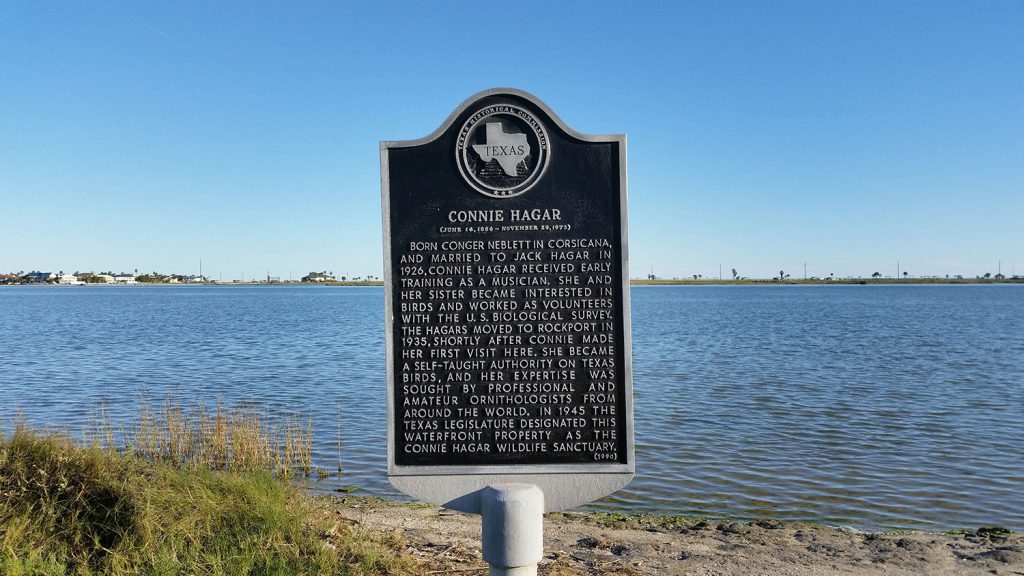
East of SH 35 (Broadway Street) at “Y” intersection, waterfront property facing Connie Hagar Wildlife Sanctuary, Rockport, TX 78382 (see map) MARKER TEXT (June 14, 1886 – November 29, 1973) Born Conger Neblett in Corsicana, and married to Jack Hagar in 1926, Connie Hagar received early training as a musician. She and her sister became interested in birds and worked as volunteers with the U.S. Biological Survey. The Hagars moved to Rockport in 1935, shortly after Connie made her first visit here. She became a self-taught authority on Texas birds, and her expertise was sought by professionals and amateur ornithologists from around the world. In 1945 the Texas Legislature designated this waterfront property as the Connie Hagar Wildlife Sanctuary. (1990)
First Baptist Church of Rockport
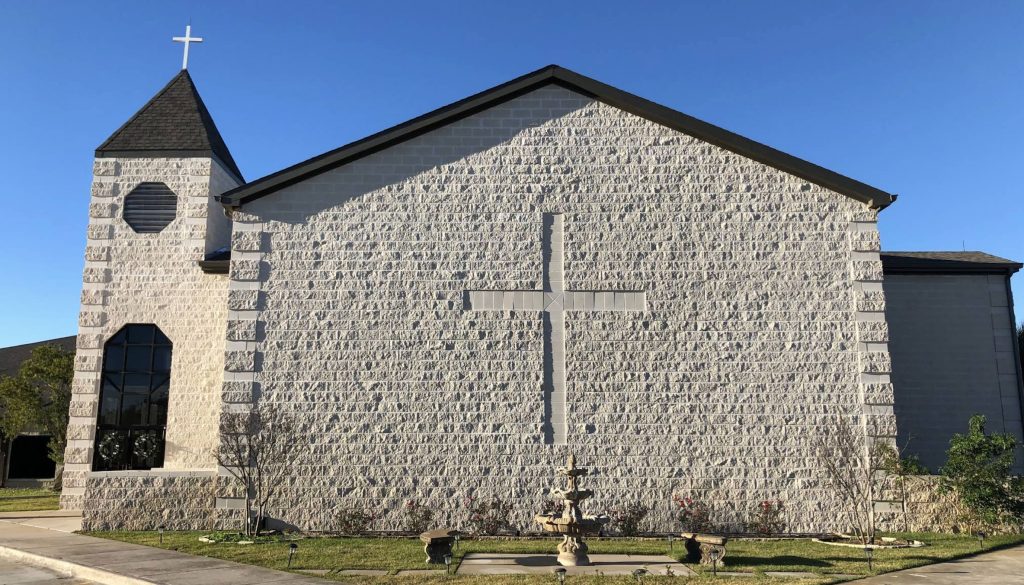
1515 N. Live Oak, Rockport, TX 78382 (see map) MARKER TEXT Organized in 1873, the First Baptist Church of Rockport originally was located on S. Church Street. L. D. Young served as the first pastor. The hurricane of 1919 destroyed the first church building, but the members built a new structure at the corner of Live Oak and Main Streets the following year. They joined with Rockport’s Methodist and Episcopal congregations to form an ecumenical Sunday School. Throughout its history, the First Baptist Church of Rockport has served the community with a variety of worship, educational, and outreach programs. (1991).
First National Bank of Rockport
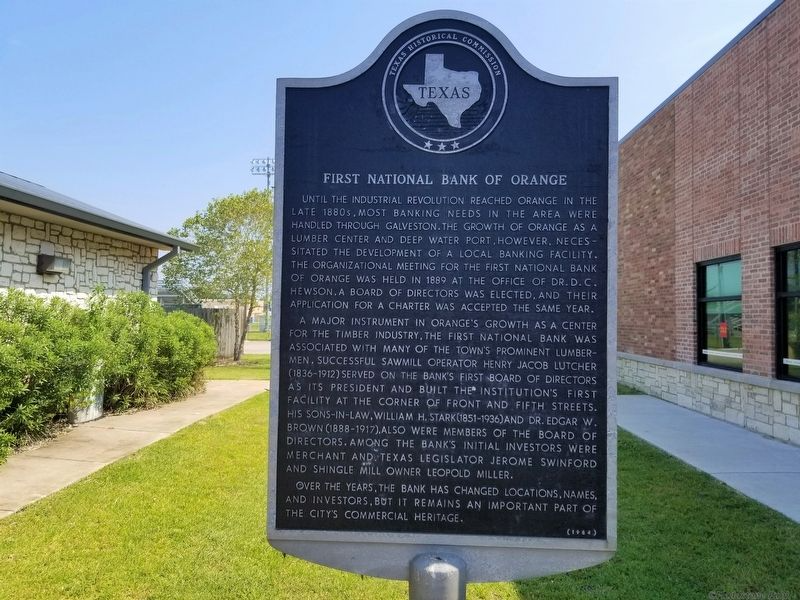
Corner of Austin and Liberty streets, Rockport, TX 78382 (see map) Chartered on October 8, 1890, the First National Bank of Aransas Pass (now Rockport) was organized by a group of businessmen led by John H. Traylor, James M. Hoopes, George W. Fulton, Jr., James C. Fulton, and Richard H. Wood. Located at Main and Water streets, the bank played a vital role in Rockport’s growth and development. Its name was changed to First National Bank of Rockport in 1903. After surviving both the 1919 storm and the Great Depression, the bank moved to new quarters across the street from its first location in 1958, and to this site in 1974. (1990).
Frandolig Island
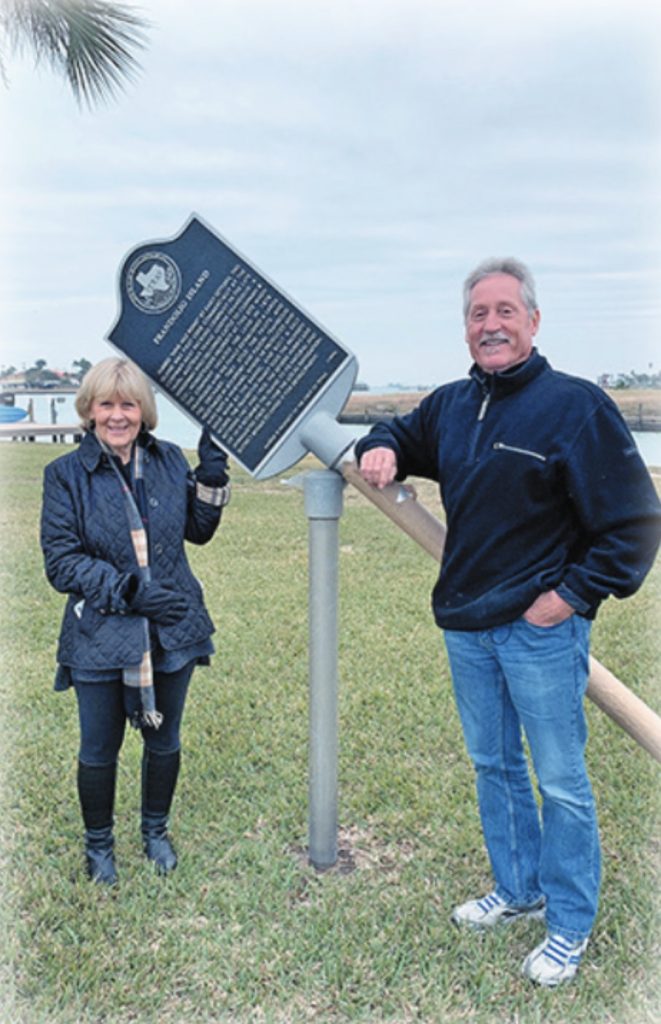
1797 Bayshore Dr., Rockport, TX 78382 (see map) MARKER TEXT Dubbed “Nine Mile Point” by early settlers, this island was first used commercially by the Cushman Meat Packing Company in the late 1860s. Austrian Franz Joseph Frandolig, a horseman who had delivered cattle to Cushman & Co., homesteaded property at this site when the company vacated the land in 1878. Frandolig and his family established a large fig orchard. They sold the fruits and vegetables in Rockport and Fulton. Frandolig also kept a vineyard, where he produced and sold wine by the barrel, and built a salt works. The Frandolig family sold the property between 1901 and 1903. The severe hurricane of 1919 returned the island to its natural and uninhabited state. In 1958 the local navigation district began to offer it for development. (1999).
Rockport Cemetery
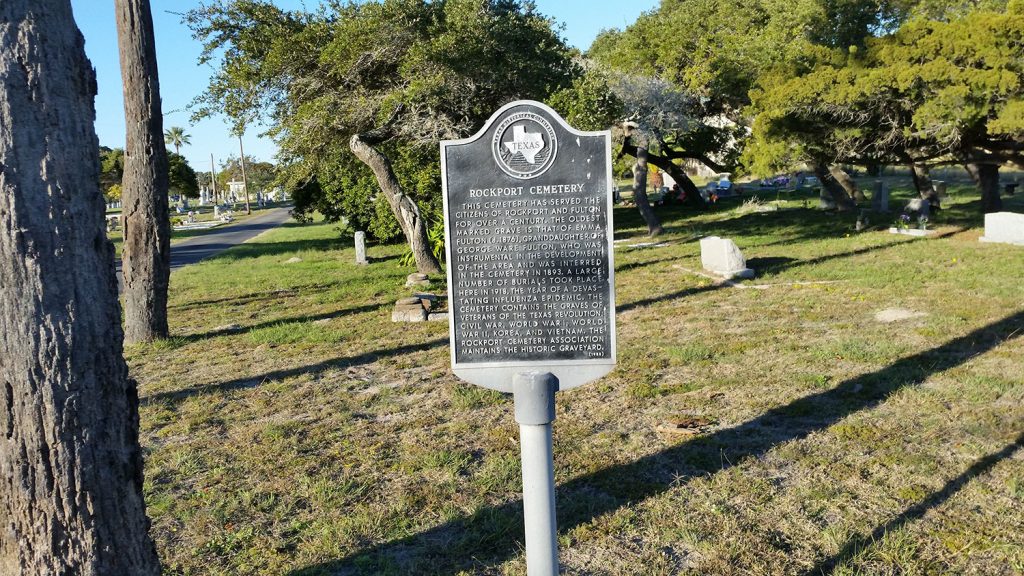
2040 Tule Park Dr, Rockport, TX 78382 (see map) MARKER TEXT This cemetery has served the citizens of Rockport and Fulton for over a century. The oldest marked grave is that of Emma Fulton (d. 1876), granddaughter of George Ware Fulton, who was instrumental in the development of the area and was interred in the cemetery in 1893. A large number of burials took place here in 1918, the year of a devastating influenza epidemic. The cemetery contains the graves of veterans of the Texas Revolution, Civil War, World War I, World War II, Korea, and Vietnam. The Rockport Cemetery Association maintains the historic graveyard. (1988).
Site of Heldenfels Shipyard
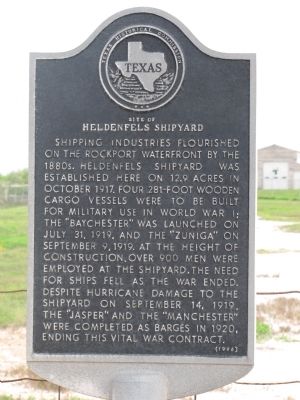
1800 S. Church Street (SH 70), Rockport, Tx 78382 (see map) MARKER TEXT Shipping industries flourished on the Rockport waterfront by the 1880s. Heldenfels Shipyard was established here on 12.9 acres in October 1917. Four 281-foot wooden cargo vessels were to be built for military use in World War I; the “Baychester” was launched on July 31, 1919, and the “Zuniga” on September 9, 1919. At the height of construction, over 900 men were employed at the shipyard. The need for ships fell as the war ended. Despite hurricane damage to the shipyard on September 14, 1919, the “Jasper” and the “Manchester” were completed as barges in 1920, ending this vital war contract. (1996).
Wood-Jackson House
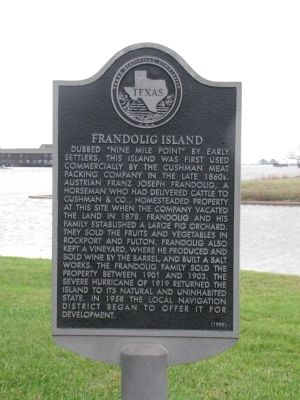
Historical Marker at 701 N. Magnolia, Rockport, TX 78382 (see map) MARKER TEXT Tobias “T. R” Wood purchased lots at a sheriff’s auction in 1910 and built this Queen Anne style house. T.R worked on his father’s cattle ranch located on San Jose Island, When R.R. moved to Victoria to practice law, his brother, Will W. Wood and wife Alpha Kennedy Wood resided in the home. In 1923 the house was purchased by Stephen Ford Jackson and wife Irene Owners of the Jackson seafood company. Their sons, James and Norvell Jackson started a boat building company called Jackson Marine Service and a third business Jackson channel and dock. Features include front, rear and side-facing gables. A semi-wraparound covered porch supported by column and spindle work ornamentation.
Smith-Brundrett House
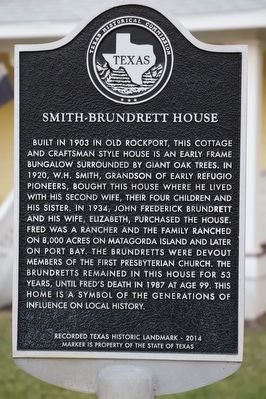
901 N. Austin Street, Rockport, TX 78382 , West side of N. Austin St. between Orleans and Cedar streets. (see map) MARKER TEXT Built in 1903 in Old Rockport, this Cottage and Craftsman Style House is an early frame Bungalow surrounded by giant oak trees. In 1920, W.H. smith, grandson of early Refugio pioneers, bought this house where he lived with his second wife, their four children and his sister. In 1934, John Frederick Brundrett and his wife, Elizabeth, purchased the house. Fred was a rancher and the family ranched on 8,000 acres on Matagorda Island and later on Port Bay. The Brundrett’s were devout members of the First Presbyterian Church. The Brundrett’s remained in this house for 53 years, until Fred’s death in 1987 at age 99. This home is a symbol of the generations of influence on local history.
Joe & Bertha Harper House
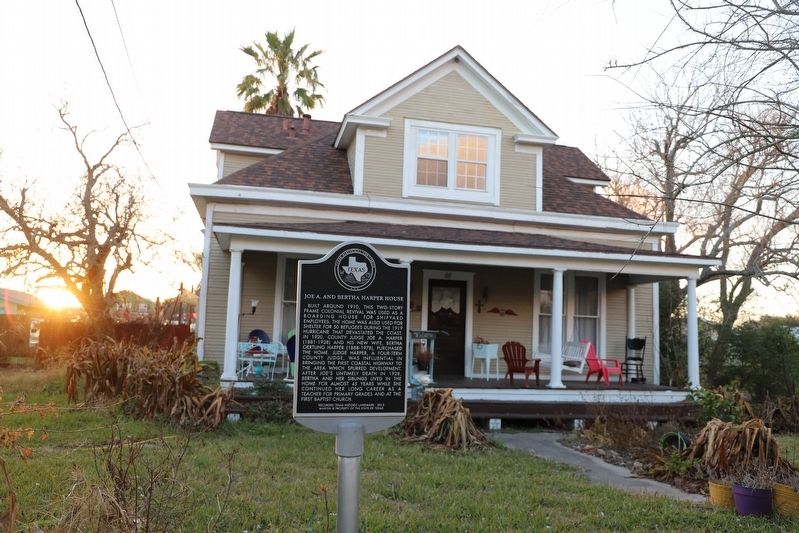
811 N. Live Oak, Rockport, Tx 78382 (see map) MARKER TEXT Built around 1910, this two-story frame Colonial Revival was used as a boarding house for shipyard employees. The home was also used for shelter for 50 refugees during the 1919 hurricane that devastated the coast. In 1920, county judge Joe A. Harper (1881-1928) and his new wife, Bertha Oertling Harper (1888-1978), purchased the home. Judge Harper, a four-term County Judge, was influential in bringing the first coastal highway to the area which spurred development. After Joe’s untimely death in 1928, Bertha and her siblings lived in the home for almost 45 years while she continued her long career as a teacher for primary grades and at the First Baptist Church.

